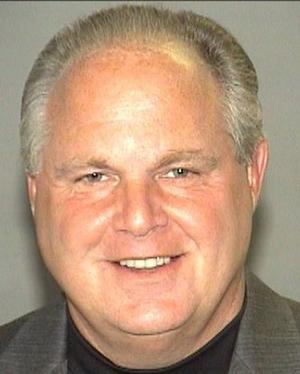There exists a multitude of reasons for learning Spanish – a fast-growing Hispanic population in the US, the increasingly visible Latino influence on various facets of pop culture – night life, film, dance – to mention a few. Others simply wish to learn basic Spanish language phrases in preparation for travelling abroad, to decipher the menu at their favorite tapas bar, or to absorb themselves in a challenging intellectual pursuit. Regardless of the reason, thousands of Americans realize the need to pick up Spanish language skills or brush off the cobwebs from the long-forgotten phrases they learned back in high school.
The best way to learn any language is to enroll in an institute where small group classes are offered and where a variety of tools are used to impart knowledge, including audio and video. It is not fun to simply learn nouns and memorize verb conjugations, but watching a video of a diner ordering food in a bustling restaurant in Barcelona brings life to the lessons. Various techniques should be employed, such as role playing exercises, short oral presentations, and the like, to ensure that students play an active role in developing their listening, reading, writing and speaking skills. Immersion-style programs whose methodology requires students to start speaking Spanish from the first day are preferable as well.
Below are three highly recommended institutions of learning that offer high quality Spanish language courses in New York City.
Instituto Cervantes
A world-wide non-profit created by the Spanish government in 1991, it is appropriately named after the most famous figure in Spanish literature. With branches in over twenty countries, the mission of Instituto Cervantes is “to promote the teaching, study, and use of Spanish as a second language and to contribute to the advancement of the Spanish and Hispanic American cultures throughout non-Spanish speaking countries.
Comprehensive Spanish language courses are divided into four levels: Elementary, Intermediate, Advanced and Superior, and each level in turn is divided into four separate “proficiency stages”, thus a total of sixteen stages. Beginners and returning students alike are required to take a written placement test consisting of multiple choice questions and essay exam, followed by a telephone interview with an instructor. This screening process helps each student to be placed in the appropriate stage based on his existing skills and knowledge.
Class size at Instituto Cervantes is limited to a maximum of twelve students, and cost varies from $343 – $390. Usually the weekday classes during work hours are cheaper, while students on weeknight and weekend sessions pay full price. However, recently discounts have been offered that can significantly lower the cost – for example, a 15% discount for returning students or a 10% discount for early sign-up. Regular courses run for 30 hours (10 weeks), and can be taken either once a week (3 hour session), or twice a week ( 1 1/2 hour session). For learners who have shorter time frames, intensive courses covers the same 30 hours in only 5 weeks (3 hour sessions twice a week).
Instituto Cervantes employs the immersion-style method of teaching, with the use of English forbidden inside the classroom. Although daunting at first, even total beginners in Spanish find themselves learning basic words and phrases on the first day of class, and using those phrases to hold simple conversations. Language classes are held in a classroom setting at Cervantes’ brand-new location in Midtown, which also houses a modern library with an impressive selection of Spanish books and DVDs, and a small gallery hosting art exhibitions. Tuition fees include library privileges for six months.
Queen Sofia Spanish Institute (“Queen Sofia”)
Queen Sofía was founded in 1954 to promote the understanding of Spanish culture, past and present, and its influence in the Americas through a variety of programs. The Institute has offered Spanish language instruction since 1968 and hosts numerous exhibitions and cultural events related to Spain and Latin America. In addition, Queen Sofia hosts “Jueves Cine”, a monthly Thursday night screening of selected films from Spain.
Language courses at Queen Sofia are also divided into the same four levels as Instituto Cervantes, with each level having the same four separate stages. Maximum class size is also twelve people, the screening procedures (i.e. placement test, oral interview) and immersion-style method of instruction are similar. However, a language course at Queen Sofia consists of only 27 hours (9 weeks), taken once a week (3 hour session), or twice a week ( 1 1/2 hour session). For students in a rush to conquer Espanol, the same 27 hours can be compressed into a 3-week program (3 sessions of 3 hours per week).
The cost for either the 9-week or 3 week Spanish language class is $430. A note of warning though: Queen Sofia levies an additional one-year membership fee of $60 for individuals, which entitles one to invitations to special events and lectures. Thus, the total amount is comparable to Instituto Cervantes. Another difference is that the “classrooms” at Queen Sofia are similar in setup to conference rooms, so the students are gathered around the table with the instructor. Moreover, Queen Sofia offers a more liberal make-up class policy – students who miss their regularly scheduled class can attend another session of the same level on a different day of the week.
Last but not least, New York University (NYU) offers classes in more than twenty five languages through its School of Continuing and Professional Studies (SCPS). Among these languages is Spanish, por supuesto! For those with previous experience with the language and are unsure which course level is most appropriate for them, a specially-designed self-placement test is available at the SCPS website. NYU offers Spanish language courses in a wide variety of formats that will surely suit the schedule of any prospective enrollee. Class size usually ranges from 20 to 25 students.
Regular courses are divided into Levels I & II (Beginner), Levels III & 4 (Intermediate), Level 5 (Preparatory for Advanced), and Advanced. Classes meet for twelve weeks (2 hour session) and the cost is $495. For Levels I and II, the instructor uses a combination of English and Spanish, but for Levels III and higher, the classes require a certain degree of conversational proficiency and thus are solely en Espanol.
An alternative specialized format are the Accelerated Courses, suited for those who are already familiar with Spanish but may be somewhat rusty and want to get up to speed in a quick manner. Each Accelerated Course combines two levels (e.g. Level I & II, Level II & III) into one and packs twice the amount of material as a regular course in the same number of hours (and same cost). Students are advised to be prepared for some serious homework.
For those professionals unable to block off time during the week, Weekend Intensives are the perfect solution. Consisting of twelve meetings of 3 hours each (cost $755) on Saturday mornings, these provide a thorough and systematic introduction to Spanish. Lastly, for beginners who are only interested in learning a few phrases for travel abroad, or who are unsure of what to expect in a full-fledged Spanish language course, NYU SCPS offers Introductory Immersion Weekends. These courses allow students to acquire basic grammar, vocabulary, and communication skills in a fun, relaxed atmosphere. These are held on three consecutive Saturdays from 9am to 3pm and cost $255.
To top it all, classes are held in NYU’s main campus set in the heart of Greenwich Village, one of New York City’s most vibrant neighborhoods lined with cafes, restaurants, and bars. Simply a perfect atmosphere for discussing the day’s lessons, practicing newly acquired Spanish vocabulary on classmates, or completing much-dreaded homework over coffee.
Reference:
- Instituto Cervantes (www.cervantes.org)









